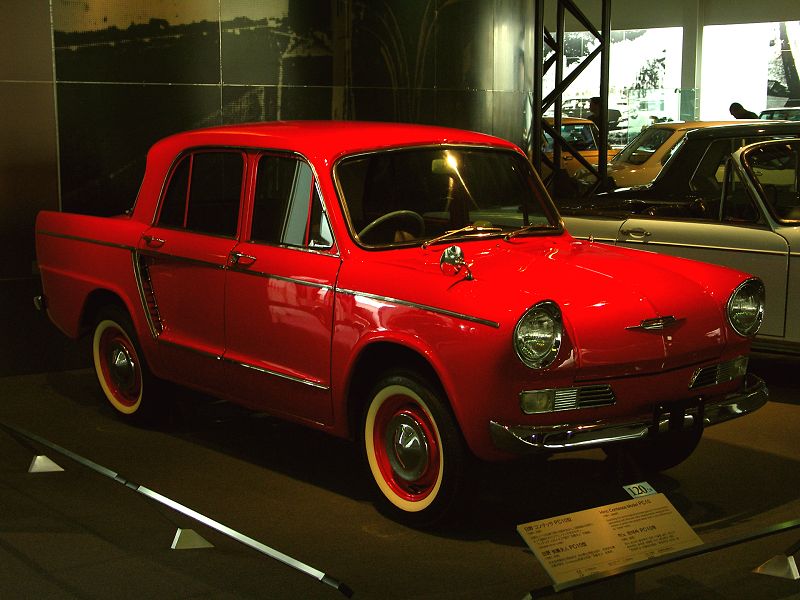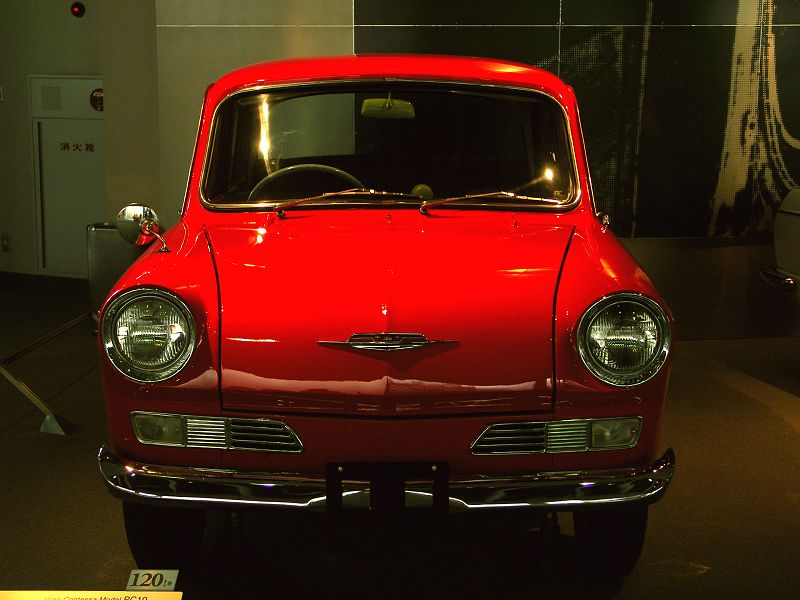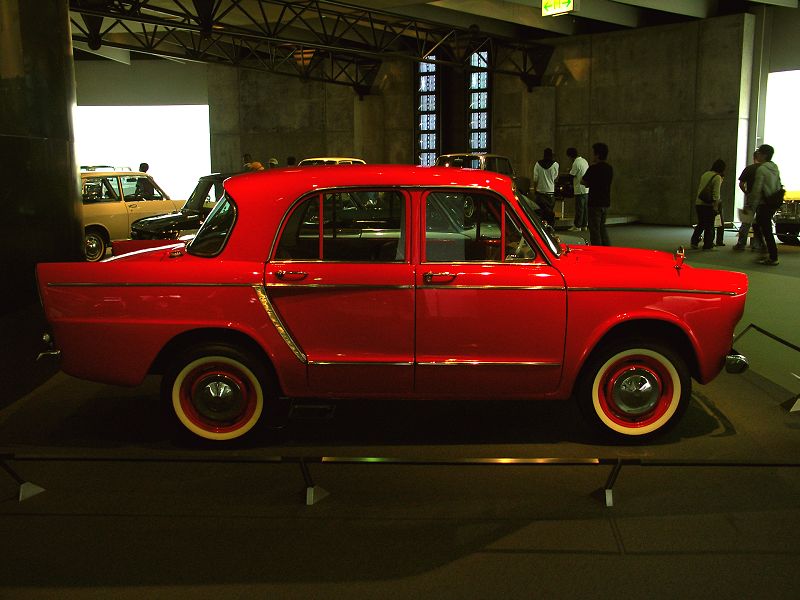Description
The Hino Contessa PC10 was the first passenger car designed and built entirely by Hino Motors, marking the company’s evolution from a manufacturer of commercial vehicles and licensed Renaults into a full-fledged automobile producer. Introduced in 1961, the PC10 represented Hino’s bold step into the competitive Japanese passenger car market of the early 1960s, a time dominated by rapidly growing brands like Toyota, Nissan, and Subaru. It was compact, well-engineered, and carried a distinctly European influence inherited from Hino’s earlier partnership with Renault.
The design of the Hino Contessa PC10 reflected a clear lineage from the Renault 4CV and Dauphine, both of which had been built under license by Hino in the 1950s. It featured a smooth, rounded silhouette with softly curved fenders, a sloping rear deck, and a compact, balanced stance. The styling was clean and restrained, reflecting European sensibilities more than the sharp-edged Japanese designs that would follow later in the decade. The front end carried simple horizontal grilles and round headlamps, while the rear engine cover featured vents to aid cooling—an unmistakable nod to its Renault heritage.
Inside, the Contessa PC10 offered seating for four, with a relatively spacious and well-finished cabin for such a small car. The dashboard layout was simple and symmetrical, with a centrally mounted instrument cluster and painted metal surfaces typical of early 1960s cars. Materials were modest but durable, and the seats were comfortable enough for longer drives. Hino placed a focus on ergonomics and visibility, making the Contessa practical and pleasant to use in everyday conditions.
Mechanically, the Contessa PC10 was built around a rear-engine, rear-wheel-drive layout—another carryover from Hino’s Renault experience. It was powered by a 893 cc inline four-cylinder, water-cooled engine producing around 37 horsepower, paired with a four-speed manual transmission. Though not fast, it was smooth and reliable, capable of reaching speeds of about 115–120 km/h (71–75 mph). The car’s light weight and rear-engine balance made it agile and easy to maneuver on Japan’s narrow roads, while its simplicity ensured affordable maintenance.
On the road, the Contessa PC10 offered composed handling and comfortable ride quality. Its suspension design, based on trailing arms at the rear, gave it good stability and cornering characteristics for a small rear-engine car. It was praised for being solidly built and well-engineered, if somewhat conservative in performance. Hino positioned it as a middle-class car—a step up from microcars and kei vehicles, but more affordable than the larger sedans being introduced by Toyota and Nissan.
The Contessa PC10 was available in both sedan and coupé versions, with the coupé introduced in 1962 to add a sportier option to the range. The car’s name, “Contessa,” meaning “countess” in Italian, reflected Hino’s desire to project an image of European sophistication.
Production of the PC10 continued until 1964, when it was succeeded by the redesigned Hino Contessa 1300, styled by the renowned Italian designer Giovanni Michelotti. The newer model retained the rear-engine layout but featured sharper lines and a more modern look.
Today, the Hino Contessa PC10 is a rare and fascinating car that represents the early stages of Japan’s transition into a world-class car-producing nation. It embodies Hino’s engineering integrity and ambition during a period when the company was striving to establish its own identity beyond its Renault roots. Collectors and historians appreciate the PC10 for its technical simplicity, graceful design, and important place in the story of Japan’s early automotive development. It remains a modest but charming symbol of Hino’s ingenuity and the country’s postwar progress.


